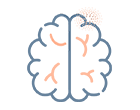Cassandrini, D., Trovato, R., Rubegni, A., Lenzi, S., Fiorillo, C., & Baldacci, J. et al. (2017). Congenital myopathies: clinical phenotypes and new diagnostic tools. Italian Journal Of Pediatrics, 43(1). doi: 10.1186/s13052-017-0419-z
Colombo, I., Scoto, M., Manzur, A., Robb, S., Maggi, L., & Gowda, V. et al. (2014). Congenital myopathies: Natural history of a large pediatric cohort. Neurology, 84(1), 28-35. doi: 10.1212/wnl.0000000000001110
Millichap, J. (2010). Congenital Muscular Dystrophies and Cognitive Impairment. Pediatric Neurology Briefs, 24(11), 87. doi: 10.15844/pedneurbriefs-24-11-8
Butterfield R. J. (2019). Congenital Muscular Dystrophy and Congenital Myopathy. Continuum (Minneapolis, Minn.), 25(6), 1640–1661. https://doi.org/10.1212/CON.0000000000000792
Sundaram, C., Uppin, M., & Meena, A. (2013). Spectrum of congenital myopathies: A single centre experience. Neurology India, 61(3), 254. doi: 10.4103/0028-3886.115064
Falsaperla, R., Praticò, A. D., Ruggieri, M., Parano, E., Rizzo, R., Corsello, G., Vitaliti, G., & Pavone, P. (2016). Congenital muscular dystrophy: from muscle to brain. Italian journal of pediatrics, 42(1), 78. https://doi.org/10.1186/s13052-016-0289-9
Gilbreath, H. R., Castro, D., & Iannaccone, S. T. (2014). Congenital myopathies and muscular dystrophies. Neurologic clinics, 32(3), 689–viii. https://doi.org/10.1016/j.ncl.2014.04.006





